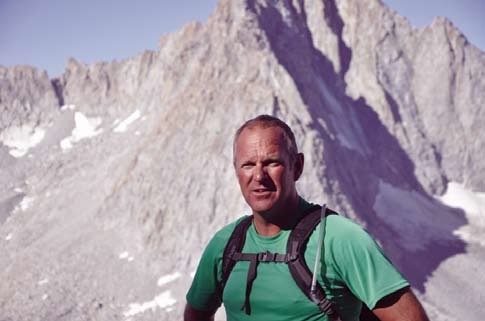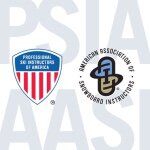Alpine Events
PSIA exam standards and the impact of Skis design on your movements.
Greeting fellow snow lovers,
My job as Alpine VP is to try to explain how and why we assess candidates in the way we do. Also, when we see movement patterns in our candidates that are wide spread and detrimental to their success we need to make some changes to the information that we provide and set expectations that you can follow as you train to sit any given exam. Let me explain what I mean.
When ski equipment characteristics change there is an equal and opposite reaction that we need to be aware of. Failure to recognize change may affect our movement patterns and can have a negative outcome for you and your students. Our new found accessibility to ski challenging snow conditions on FAT, Rockered, and funky side cut skis does not necessarily mean that we are better skiers it simply means that the skis are making it easier to be out of balance and stay out of balance without falling over.
The movements that we are seeing in exam candidates have changed in the past few years as a direct result of changes in ski design and particularly side cut. Let’s call this the ACTION. Side cut allows a skier to balance on a platform and follow the designed arc or radius of the ski. Most recreational skis now have a design radius of 9-14 Meters, which allows most people to feel the sensation of carving without the need to be skiing at 50MPH. Our body movements follow more of an ARC and so the mechanics of skiing have been altered significantly. Generally speaking skiing has moved from a sliding sport with a dominant rotary focus to sliding activity with a predominant edging or carving based focus. Neither of these aforementioned skill focuses are “bad”, it is just more difficult to accurately control a rotating ski than it is to stand on a carving ski. This ease of use allows for less disciplined movements and as a result we are seeing exam candidates with significant deficiencies in their rotary skill blending abilities, this would be the OPPOSITE REACTION. Common deficiencies are a rotation of the whole body into the turn, an inability to separate and control the rotation of the lower body underneath a stable upper body and a lack of discipline and accuracy with hand, arm and pole usage. Each of us have idiosyncratic movements that at some time will hinder or help our skiing, and modern side cut has directly affected how we feel when skiing but it has not made us technically more accurate or efficient. It’s like when I’m playing golf and hit my new oversized driver, it feels great, but I’m still not a good golfer.
To address this collective issue we will be adding a few skill based tasks to the Level 1 and 2 exam this season. The goal is to highlight and refine your rotational skill blending and balancing abilities from an entry level and beyond Level 3. These tasks are, pivot to a hockey stop, blocking pole plant drills, pivot side slips and a focus on hand and arm movements that complement and enhance the turn mechanics of any given turn. Please review your relevant certification study guide for specific details.
As professional instructors we need to have, or strive for a mastery of all movement patterns and have the ability to analyze and understand how these movements are helping or hindering you or your students’ performance. By shifting our skill focus to train for accuracy in our rotational movements, which is the opposite reaction to undisciplined skiing we will assure that our instructors will be more successful as they develop as professionals and will be better served when they attempt higher levels of certification that require greater accuracy in these areas.
Have a great season and “May the Force be with You.”
Fin





